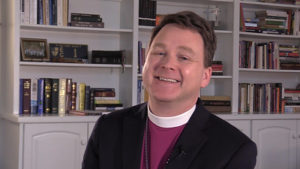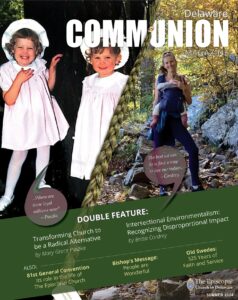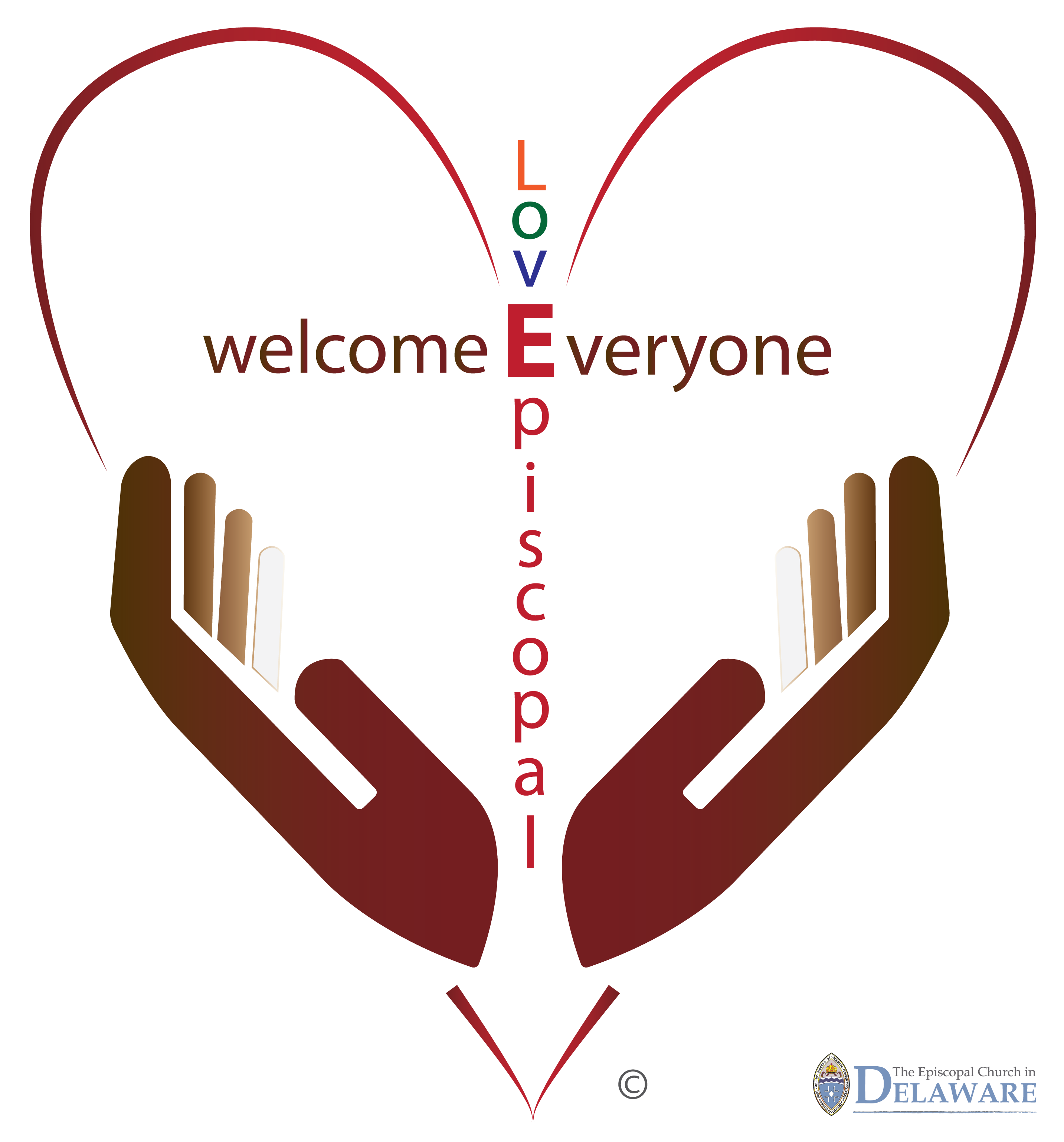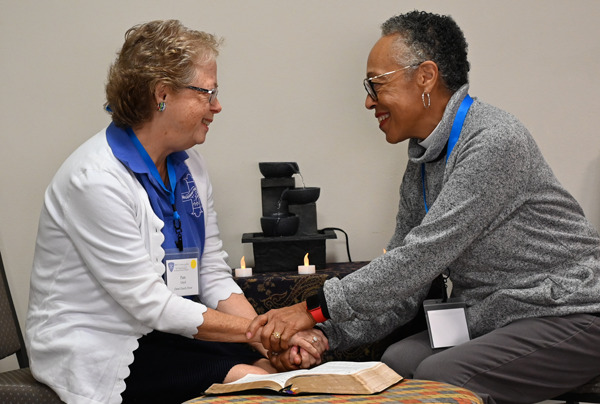History
of the Episcopal Church in Delaware
This brief history of the Episcopal Church in Delaware is based on a sketch prepared by the Rev. Christopher Agnew for the Bicentennial Yearbook in 1985. Photos are from Charles A. Silliman’s book, The Episcopal Church in Delaware, 1785-1954

The marvel of it all is that a few score Christian priests and their families would brave the dangers of the great deep in frail sailing craft, that they would leave a settled land where the Church was so firmly established, that they would remain faithful with so little encouragement or episcopal supervision, and venture into a new world to minister to the scattered flock of Christ. They endured hardship and disease; they were slandered and poorly provided for; they knew frustration and disillusionment.
It was doubtful that their work could survive. Yet survive it did, for it was founded upon the strong rock. Cut off from English supplies of men and money by the American Revolution, small groups of faithful laymen, ministered to as little as once a year in some instances, kept the faith through the dark years from 1785 to 1841 when the first resident Bishop was elected.
—from The Anglican Church in Delaware by the Rev. Nelson W. Rightmyer, 1947.
The history of the Episcopal Church in Delaware has appeared in two well-researched and highly readable volumes. The Anglican Church in Delaware, by the Rev. Nelson W. Rightmyer, published in 1947, covered the colonial period, and Charles A. Silliman’s The Episcopal Church in Delaware, 1785-1954, which brings us closer to the present.
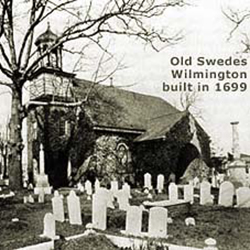
We do not know the exact details of the beginning of the Anglican Church in Delaware or of the formation of the earliest parishes. In one sense, the Church can date its beginnings to the transfer of Delaware to the British in 1664, for the arrival of the English established the presence of an Anglican laity. In 1677, the Rev. John Yeo came to Delaware from Maryland. He preached and conducted services in New Castle County. By 1682, he had moved to Calvert County, Maryland.
Until the Society for the Propagation of the Gospel in Foreign Parts (SPG) sent out its first missionaries to Delaware, the attempts to establish the Anglican Church in Delaware did not have much support. That began to change in 1703, when the SPG sent the Rev. George Ross to New Castle. In 1708, St. Peter’s in Lewes became the ninth church in Delaware established with the help of the SPG. By the time support from the SPG ended with American independence, six more churches had been started. Five of Delaware’s colonial Anglican churches have closed, including St. Matthew’s Cedar Creek, at one time the largest of the Sussex County churches. The closing of all five of the churches reflects the shifts of population.
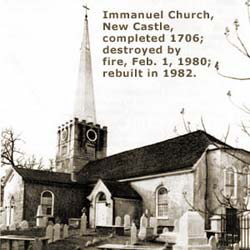
The Revolution left the Church in a weakened state. Gone was the support of the SPG that had sustained the Church for 80 years. Gone, too, were most of the Anglican clergy. Only the Rev. Sydenham Thorne, Rector of Christ Church, Mispillion, remained. The Rev. Aeneas Ross at New Castle and the Rev. Philip Reading at Appoquinimy had died. The other clergy had left. The Roman Catholic priest, the Rev. Charles H. Wharton, converted to the Episcopal Church and became Rector of Immanuel Church in New Castle in 1784. When Thorne and Wharton attended a preliminary meeting of the emerging Episcopal Church in the United States in October, 1784, Delaware’s only two Episcopal priests were outside the state.
The Revolution also altered the status of the Episcopal Church. Prior to the Revolution, the churches in Delaware were under the authority of the Bishop of London and the SPG. The treaty of 1783 that recognized America’s independence effectively severed the ties between the American churches and episcopal authority in England. Consequently, the churches in this country did not belong to any diocese, nor was there a general church in America to which individual dioceses could belong. The October 1784 meeting in New York attempted to remedy these problems.

It would be wrong to view the diocese as a list of parishes, however. The diocese is the people who live and worship and minister from those parishes, a people whose history in Delaware goes back nearly 300 years. The courage of the early settlers is reflected in many of today’s leaders, both lay and clergy. Ministries begun many decades ago continue in new forms today. The Rev. John Crosby’s work among migrant farm workers in the 1930s continues today through the growing network of the Sussex County Mission. Bishop Leighton Coleman’s attacks on racism are sustained through the work of the Pilot Congregation, the people of the Episcopal Church of Sts. Andrew and Matthew, and all who work tirelessly for inclusivity and diversity in the life of the diocese. Absalom Jones, a Sussex County slave, became rector of St. Thomas’s Church in Philadelphia and was known to many as “the Black Bishop of the Episcopal Church.” In the late 20th Century, the work of the Rt. Rev. Quintin Primo, Interim Bishop of Delaware from 1985-86, continued that brave crusade for justice and equality.
Formation of the Diocese
1785
Began on September 3
1783
The final step in the formation of the Diocese took place the next year. On September 18, 1786, Charles Wharton wrote the Rev. William White, soon to be the first Bishop of Pennsylvania, “We meet in Dover the 26th Inst. and must organize our little Church as well as we can. We must belong to some Diocese, and I suppose the matter will be between Maryland and Pennsylvania.” Charles Wharton presided at this convention and an independent Diocese of Delaware was set up without a bishop of its own. Until the election of Alfred Lee in 1841, episcopal supervision was entrusted to the Bishop of the Diocese of Pennsylvania. The convention that met in Dover on September 26, 1786, completed the three-year birth of the Diocese of Delaware.
The first convention, whose record has survived, took place in 1791 at Christ Church, Dover. In 1793, despite two attempts, no convention was held since illness made it impossible to have a quorum. Conventions did not take place in 1811 or 1812. In 1812, there was only one priest, the Rev. Robert Clay of Immanuel, in the entire Diocese. Despite this fragile existence, only three churches closed in the period from the formation of the Diocese to the election of Bishop Lee, and six new churches were established. During the 46 years that Bishop Lee led the Diocese, at least 18 churches came into existence. The number of parishes has continued to grow in the years since Bishop Lee’s death. Between World War II and the bicentennial in 1985, six more congregations joined the Diocese. In 1995, St. Andrew’s and St. Matthew’s Churches in Wilmington merged to form the Episcopal Church of Sts. Andrews and Matthew, a racially integrated congregation. In 1998, the Episcopal Community of Bear/Glasgow, a Church Without Walls, was formed.
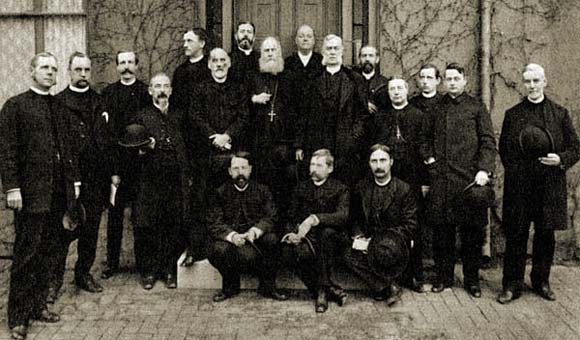
Clerical Brotherhood of Delaware
at Bishopstead, December 10, 1895
Photo: (Picture was framed and presented to Bishop Coleman on Christmas Day, 1895.)
Standing, left to right: (1) H. Ashton Henry, (2) unidentified, (3) Kensey J. Hammond, (4) Enoch K. Miller, (5) George C. Hall, (6) unidentified, (7) Martin B. Dunlap, (8) Bishop Coleman, (9) unidentified, (10) Charles E. Murray, (11-12) unidentified, (13) William J. Wilkie, and (14-15) unidentified. Seated, left to right, (16) unidentified, (17) Hamilton M. Bartlett, and (18) unidentified. The unidentified clergymen are: J. Harry Chesley, George S. Gassner, A. H. Miller, Jacob Miller, F.M. Muson, R.A. Sawyer, Charles G. Snepp, Albert R. Walker, and William Schouler (Diocese of Easton).
